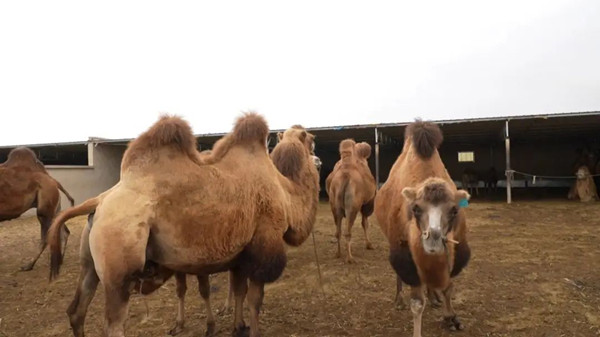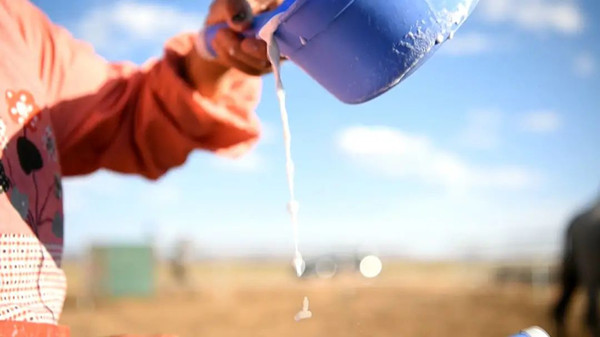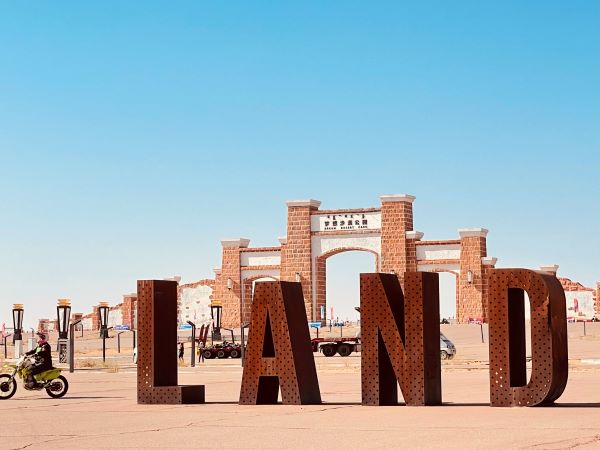Alshaa Right Banner promotes its thriving camel industry
- Updated: 2022-10-19

A curious camel checks out a photographer in Alshaa Right Banner, in Inner Mongolia. [Photo/WeChat account of Alshaa Broadcasting and TV Station]
The camel industry has become an important engine driving the development of agriculture and animal husbandry in Alshaa Right Banner – located in Alshaa League, in North China's Inner Mongolia autonomous region – according to local media reports.
A major project for the construction of a forage production facility to feed the camels and reserve support facilities is currently underway there, with a total investment of 55 million yuan ($7.64 million), covering an area of some 78 mu (5.2 hectares).
After completion, it will serve the camel industry in Alshaa League by providing scientific and high-quality camel forage, and reduce the cost of purchasing forage for farmers and herdsmen.
The quality and yield of camel milk are closely related to the quality of the forage. With the establishment of the forage production facility, the food will be scientifically formulated according to the camel's physique and the content of energy, protein, fiber and mineral elements – so as to ensure the safety and quality of the camel's diet.

A man pours some camel milk to show its quality in Alshaa Right Banner, in Inner Mongolia. [Photo/WeChat account of Alshaa Broadcasting and TV Station]
In the workshop of Inner Mongolia Tiantuo Biotechnology Co, cosmetics with camel milk, camel hump oil and camel milk fat as the main raw materials roll off the production line.
The company works closely with the Inner Mongolia Camel Research Institute and has obtained five R&D patents for its camel milk and camel fat series of cosmetics and it operates two cosmetic production lines.
The company now has 26 camel-related cosmetics products including toners, lotions and essences and its annual sales have now reached more than 5 million yuan.
Over the past 10 years, Alshaa Right Banner has successively issued camel industry development support policies for farmers and herdsmen to start businesses, so as to build a supply chain integrating cashmere, meat and milk. These initiatives have included subsidies for the construction of camel sheds, subsidies for the purchase of camel milk, subsidies for camel insurance and loans.
Right now, in the banner the number of Bactrian camels – also known as the Mongolian camel or domestic Bactrian camel – has reached over 60,000 and 93 professional cooperatives for camel breeding have been registered and established. There are now more than 3,000 camel farmers and herdsmen and the average annual household income has remained above 30,000 yuan.


